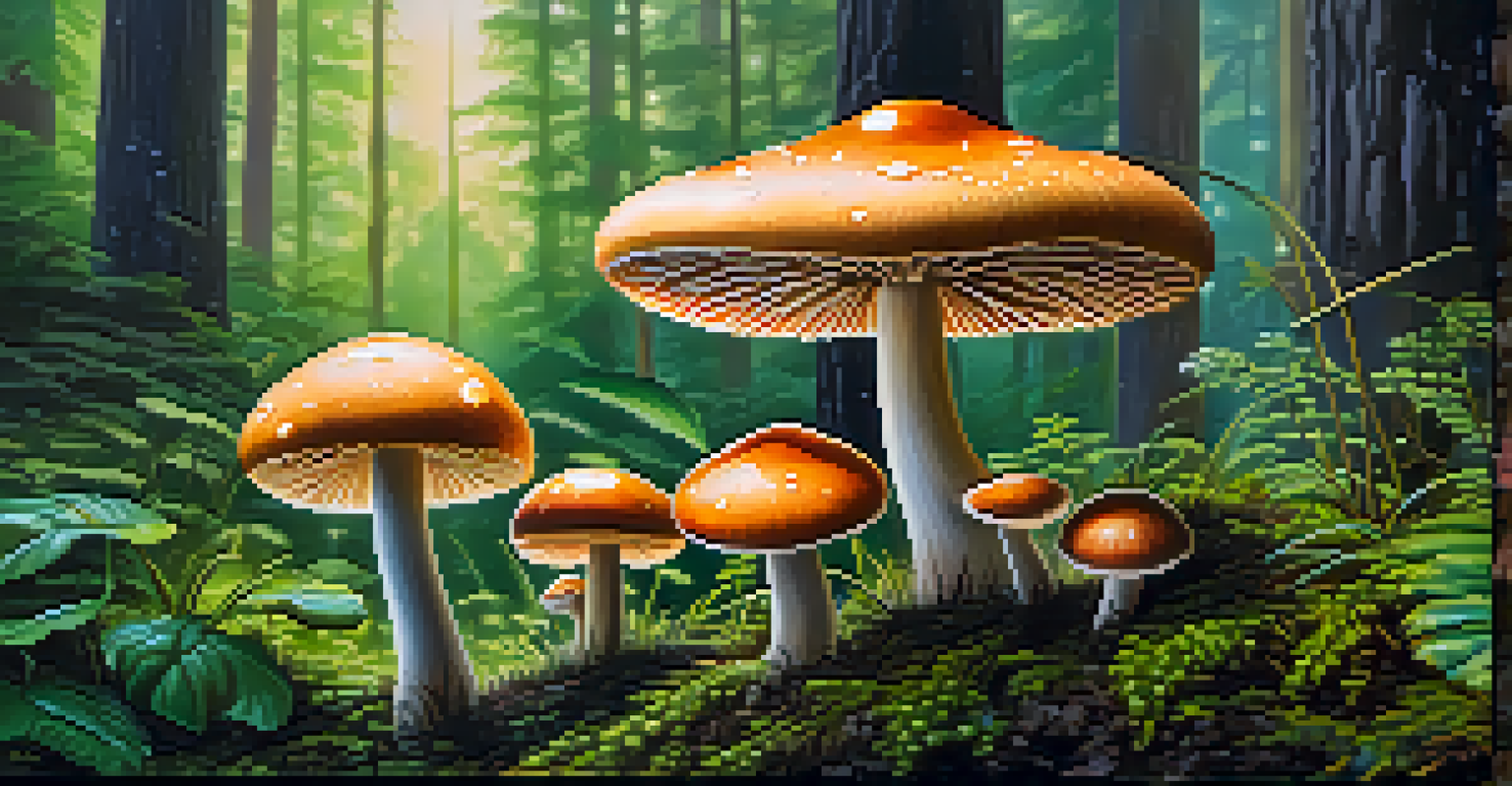Cultural Perspectives on Time and Entheogen Use

Understanding Time: A Cultural Lens
Time is often perceived differently across cultures, shaping how societies function. In Western cultures, time is linear, emphasizing schedules and punctuality. Conversely, many Indigenous cultures view time as cyclical, focusing on seasons and natural rhythms.
Time is a created thing. To say 'I don't have time,' is like saying, 'I don't want to.'
This perception impacts everything from daily activities to spiritual practices. For instance, in cultures that prioritize cyclical time, there’s a greater emphasis on connection to nature and community events. This holistic approach fosters a deeper understanding of existence beyond mere seconds and minutes.
Understanding these cultural differences in time perception can enhance our appreciation for diverse practices, including those involving entheogens. By grasping how time influences these practices, we can better comprehend their significance in various cultural contexts.
Entheogens: Bridging Time and Consciousness
Entheogens, substances that inspire spiritual experiences, play a vital role in many cultures. In some Indigenous traditions, these substances are used during rituals that connect participants with the spirit world, often transcending typical perceptions of time. This creates a unique experience where past, present, and future can converge.

For example, the use of peyote in Native American ceremonies allows participants to enter altered states of consciousness. During these experiences, individuals often report a profound sense of timelessness, where they feel connected to their ancestors and the universe. This illustrates how entheogens can reshape our understanding of time.
Cultural Views on Time Vary Widely
Different cultures perceive time in unique ways, influencing their societal practices and spiritual beliefs.
By exploring how different cultures integrate entheogens into their spiritual practices, we uncover a rich tapestry of beliefs and experiences. These practices highlight the intricate relationship between time, spirituality, and the human experience.
Historical Perspectives on Time and Psychedelics
Throughout history, various cultures have utilized entheogens, often tied to their understanding of time. Ancient civilizations, such as the Greeks and Aztecs, incorporated these substances into their rituals, which were deeply connected to their calendars and agricultural cycles. This integration signifies how timekeeping influenced spiritual practices.
The only reason for time is so that everything doesn't happen at once.
The use of substances like mushrooms and ayahuasca in shamanic traditions often corresponds with specific times of the year. Festivals and harvests are marked by these gatherings, emphasizing the cyclical nature of both time and spiritual experiences. In this way, entheogens are seen not just as substances, but as tools for aligning with the universe.
By examining historical practices, we see that the relationship between time and entheogen use is not merely coincidental. It reveals a profound understanding of nature's rhythms and the quest for spiritual enlightenment.
Modern Interpretations of Time and Entheogens
In contemporary society, the resurgence of interest in psychedelics has sparked discussions about their role in understanding time. Many modern users report profound experiences that challenge the conventional linear view of time. This has led to a growing interest among researchers and enthusiasts in the therapeutic potential of these substances.
For instance, the use of psilocybin in therapy often reveals insights that feel timeless, providing patients with clarity that transcends their immediate struggles. As individuals navigate their inner landscapes, they encounter moments that seem to stretch and bend, allowing for deep reflection.
Entheogens Connect Time and Spirit
Entheogens are used in various cultural rituals to create spiritual experiences that transcend conventional understanding of time.
This modern interpretation echoes ancient practices, suggesting that despite advancements in technology and science, the spiritual quest for understanding time remains timeless. The dialogue between past and present highlights the continuing relevance of entheogens in exploring consciousness.
Cultural Rituals: Time, Place, and Entheogens
Cultural rituals involving entheogens often emphasize the significance of timing and location. These rituals are typically performed at specific times, such as lunar cycles or seasonal changes, which are believed to enhance the experience. This connection to time and place is essential for participants to fully engage with the spiritual dimensions of the journey.
In many South American cultures, for instance, ayahuasca ceremonies are held during particular times of the year when the plants are in bloom. The timing is believed to align participants with the energies of nature, enhancing their experiences. This illustrates how deeply intertwined cultural practices are with the natural world.
By examining these rituals, we see that the use of entheogens is often a communal experience, rooted in shared beliefs about time. This collective approach fosters a sense of unity and connection among participants, further enriching the spiritual journey.
The Role of Nature in Shaping Time Perception
Nature plays a pivotal role in how different cultures perceive time, particularly regarding entheogen use. Many Indigenous cultures emphasize the importance of natural cycles, aligning their spiritual practices with the rhythms of the earth. This connection fosters a deep respect for the environment and its influence on time.
For example, cultures that rely on agriculture often use entheogens during planting or harvesting seasons, reinforcing the idea that time is intrinsically linked to natural cycles. This relationship encourages a greater appreciation for the environment and its rhythms, shaping not just spiritual beliefs but also daily life.
Nature Shapes Time Perception
Many cultures' understanding of time is deeply connected to natural cycles, affecting their spiritual practices and lifestyle.
By recognizing the role of nature in shaping time perception, we gain insight into the underlying principles that guide these practices. This understanding can inspire a more harmonious relationship with our surroundings, encouraging us to consider how we engage with time in our own lives.
Future Directions: Time, Culture, and Entheogen Research
As interest in entheogens grows, so does the need for research into their cultural significance and relationship with time. Future studies may explore how these substances can help us understand different cultural perspectives on time and consciousness. This exploration could offer insights into healing, well-being, and community.
Researchers are beginning to investigate how entheogens can foster a sense of interconnectedness, transcending the boundaries of time and culture. By engaging with diverse cultural practices, we can appreciate the rich tapestry of human experience and its connection to the natural world.

In this ever-evolving field, the potential for new discoveries is immense. As we continue to explore the relationship between culture, time, and entheogen use, we may uncover profound insights that can benefit individuals and communities alike.